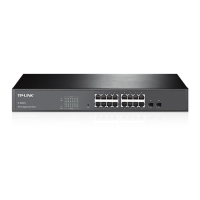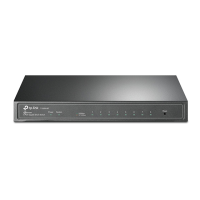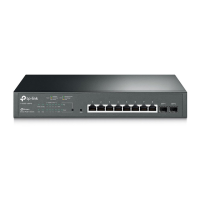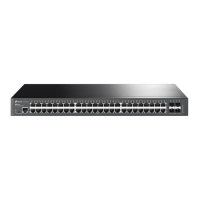75
Network Diagram
Configuration Procedure
Configure Switch A
Ste p Operation Description
1
Create VLAN10 Required. On VLAN→802.1Q VLAN→VLAN Config
VLAN with its VLAN ID as 10, owning Port 2 and Port 3.
link type of Port 2 and Port 3 as Untagged and Tagged respectively.
2
Create VLAN20 Required. On VLAN→802.1Q VLAN→VLAN Config
VLA N with its VLAN ID as 20, owning Port 3 and Port 4.
link type of Port 3 and Port 4 as Tagged and Untagged respectively.
Configure Switch B
Ste p Operation Description
1
Create VLAN10 Required. On VLAN→802.1Q VLAN→VLAN Config
VLA N with its VLAN ID as 10, owning Port 6 and Port 8.
link type of Port 6 and Port 8 as Tagged and Untagged respectively.
2
Create VLAN20 Required. On VLAN→802.1Q VLAN→VLAN Config
VLAN with its VLAN ID as 20, owning Port 6 and Port 7.
link type of Port 6 and Port 7 as Tagged and Untagged respectively.
6.3 MAC VLAN
MAC VLAN technology is the way to classify VLANs according to the MAC addresses of Hosts. A
MAC address corresponds to a single VLAN ID. For the device in a MAC VLAN, if its MAC address
is bound to VLAN, the device can be connected to another member port in this VLAN and still
takes its member role effect without changing the configuration of VLAN members.
The packet in MAC VLAN is processed in the following way:
1. When receiving an untagged packet, the switch matches the packet with the current MAC
VLAN. If the packet is matched, the switch will add a corresponding MAC VLAN tag to it. If no
MAC VLAN is matched, the switch will add a tag to the packet according to the PVID of the
received port. Thus, the packet is assigned automatically to the corresponding VLAN for
transmission.
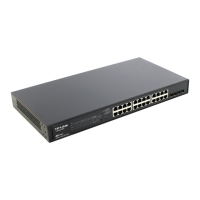
